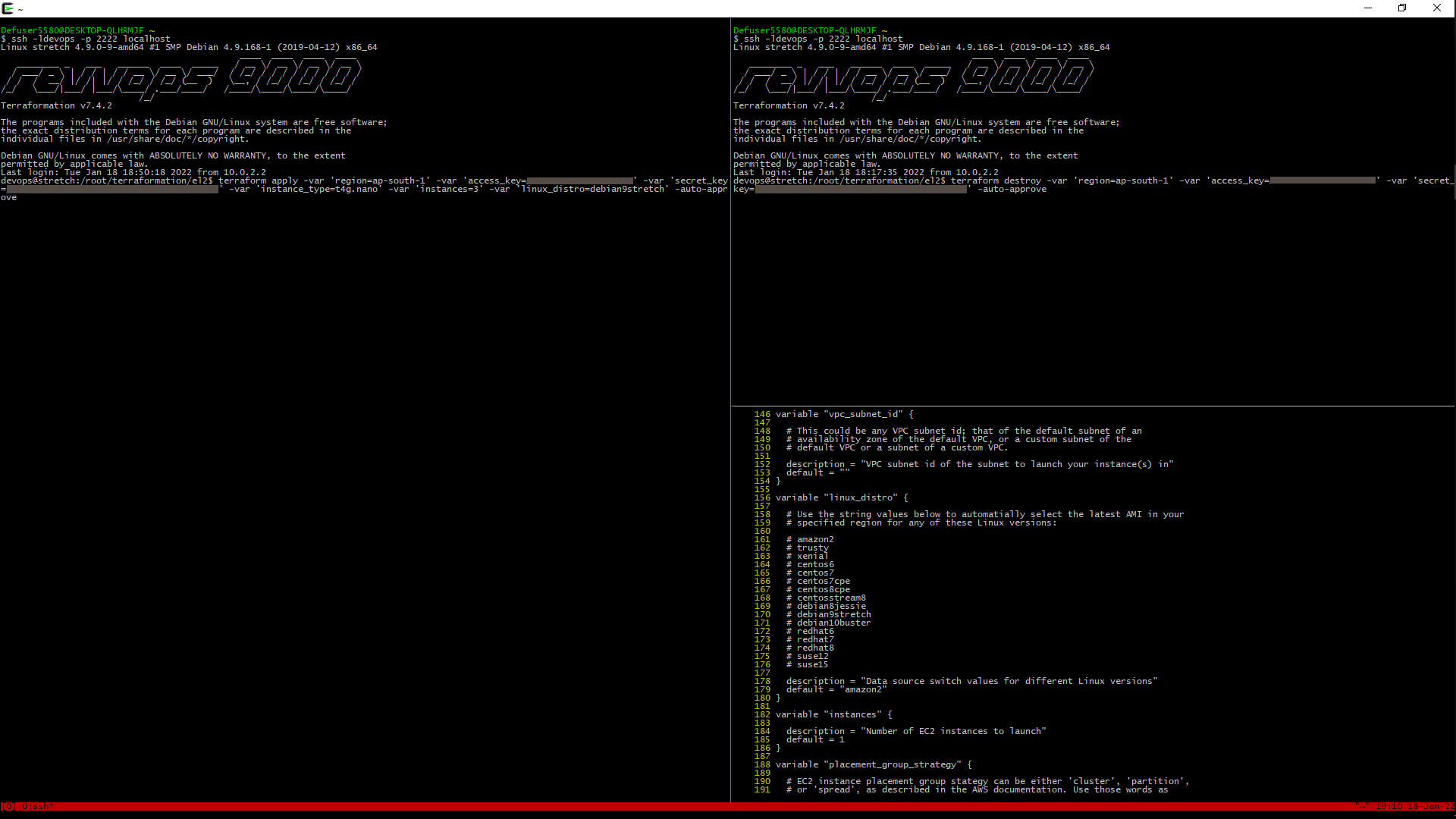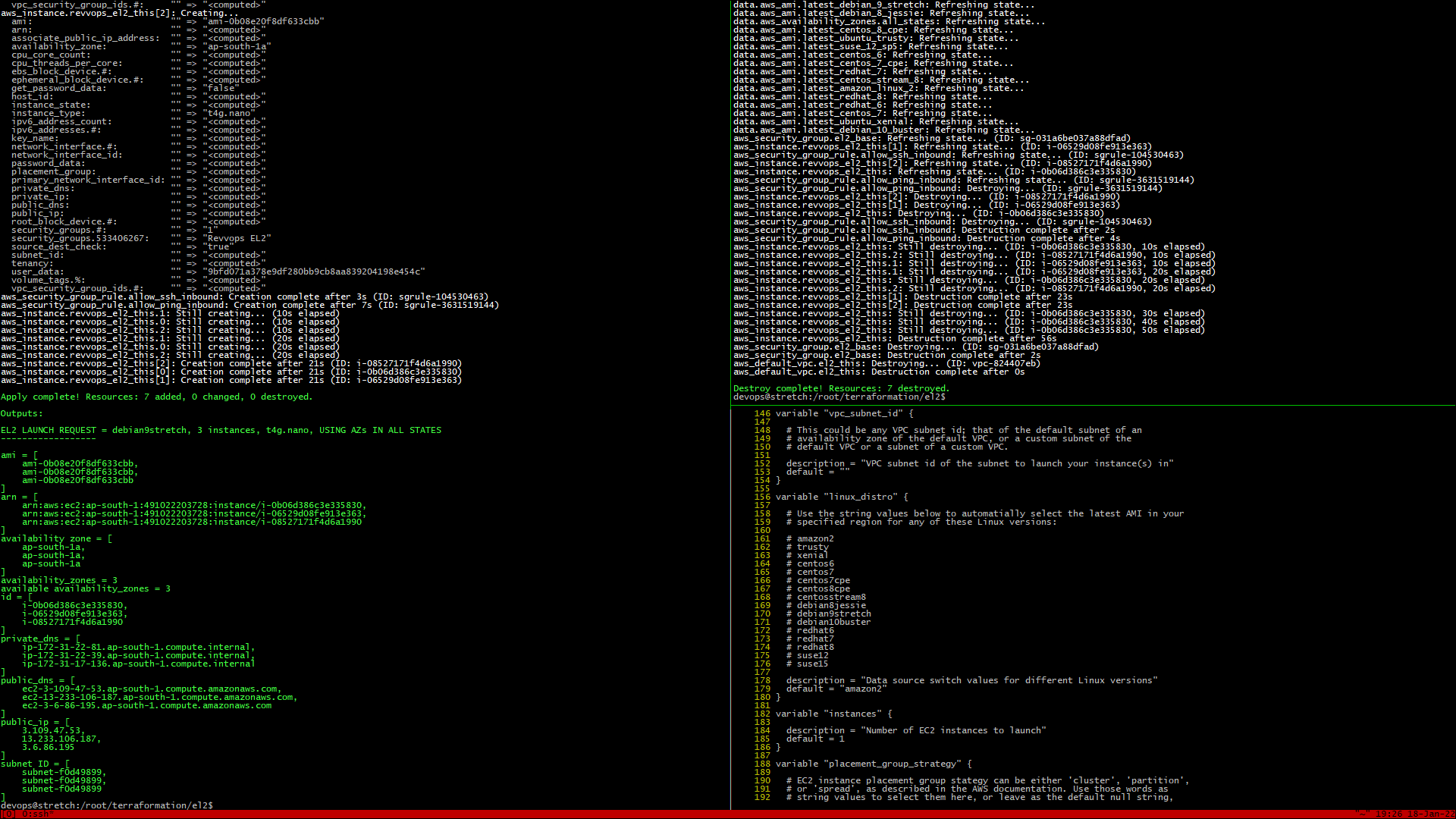The burstable instance types for ARM architecture are the T4g variants, as described in the AWS documentation on this subject.
When you ask for a Linux distribution/version on a Graviton instance type like T4g.nano, EL2 has to choose from ARM based AMIs as opposed to the more prevalent Intel x86 based AMIs. If an Intel x86 based AMI was chosen when the requested instance type is T4g.nano, AWS would not make sense of the request, resulting in a failed launch. EL2 does this for all the Graviton instance types: m6g, m6gd, m6gd.metal, c6g, c6gd, c6gd.metal, c6gn, r6g, r6g.metal, r6gd, r6gd.metal, x2gd and x2gd.metal.
So here is how 'Launching a Burstable Debian 9 ARM Cluster in 1 line with EL2' actually looks like on the command line:
terraform apply -var 'region=ap-south-1' -var 'access_key=...' -var 'secret_key=...' -var 'instance_type=t4g.nano' -var 'instances=3' -var 'linux_distro=debian9stretch' -auto-approve
As you can tell from the value of the
region parameter, we're using Asia Pacific South (Mumbai) for this launch, which offers the lowest T4g.nano On-Demand rates by far.

